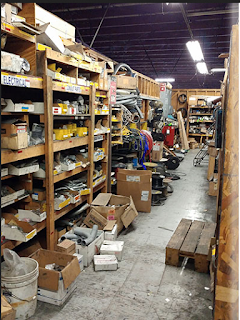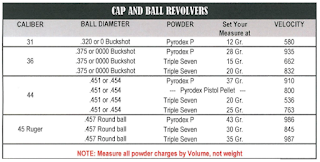Part of the deal with the University was that Gwain would IMMEDIATELY pick up two classes. The previous instructor had been incarcerated and was not expected to be available for an as-yet determined amount of time.
Even though the semester was already in-session, the University was able to shuffle assignments around and arrange for two back-to-back classes in college-level writing for Gwain to teach.
That meant that Gwain would be gone for at least three hours, three days a week and five hours on the day he had office-hours.
Gwain walked in to meet his first class. Only a third of the students bothered to attend. He expected that to change after he had graded the papers his predecessor left him. Both classes had two sets of ungraded papers. In all, he had 160, 800-to-1200 word essays to grade.
Gwain launched into his monologue about how the Greek Myths were one of the ties that bound the far-flung Greek colonies together for three thousand years. The Greek colonies ranged from the Straits of Gibraltar to north shores of the Black Sea and were able to maintain their culture in spite of vastly different local cultures.
He rhapsodized about how itinerant storytellers repeated and refined the stories with every retelling, moving from community-to-community like a needle stitching panels in a quilt together. He talked about how stories, myths, evolved to make them easier to memorize and to embed moral lessons within them, lessons that every person who heard them could walk away with some greater understanding of humanity...
***
Diane Nance rang the doorbell and waited for Jana to invite her in.
Gwain had gotten her name by advertising for an "Adult sitter" on SpaceBook Markets.
Not only had Diane been the first to respond, but she lived only two blocks way from where Gwain and Jana now lived.
Diane was a black woman of about 40 looking to pick up a few extra dollars while her two children were at school. Gwain's offer of $25 an hour, cash payable the day she earned it, and the timing of the hours needed was very agreeable to her.
Jana bid her to enter.
Jana and Diane had a conversation the day that Gwain had hired her. Their chemistry seemed compatible.
Jana was wary. There is only so much you can learn about somebody in a fifteen minute conversation.
"I hope you don't mind if I do a few dishes and some light-picking up while I am here?" Diane ventured. "I have to move around or time goes really slow for me."
Diane's use of "slow" instead of the more proper adverb "slowly" grated on Jana's nerves. It was just one more indignity that she would have to get used to.
"I don't mind" Jana said. She felt strangely intruded upon by another woman doing domestic work in her house, her personal space. Then it hit her, Jana was already thinking of this small bungalow as her own space.
"Where do you keep the laundry baskets?" Diane asked.
"I think there one is in one of the back-rooms. I haven't been able to really look the place over" Jana apologized.
"Tell you what" Diane said. "Why don't I put you in the transfer chair and you can keep me company and look things over while I tidy up. You prolly have ways you want clothes sorted and folded and ain't nobody does things exackly the same."
Even though she was tired, Jana thought that was a good idea.
Jana asked Diane about the neighbors and the local businesses. And while Diane had something to say about every one of them, Jana noticed that Diane very carefully didn't say anything negative about any of them in any kind of direct way.
When Jana asked about the hardware store, Diane said "If you are in a hurry, you best go in the morning cause they a lot slower after lunch."
After a moment of thought, Jana realized that Diane was speaking in a kind of code. She was saying that the owner was likely to have a few drinks at lunch.
Once Jana had figured out Black-Southern-Genteel, she was able to glean far more information from Diane's descriptions.
"You know, only about a third of what you are telling me is sticking" Jana said with a sigh. "I think we need to have this conversation again after I meet some of these people.
Diane nodded her head in agreement. "Won't be no problem. Ain't much to talk about round here 'cept people."
Glancing at the clock, Diane said "Where do time go? I already been here for two hours and it is almost time for The Price is Right. I don't watch much TV, but I do like that show."
***
The Dean at Asphodel's College of Liberal Arts had extended Gwain some professional courtesies. One of them was continued access to the Large Language Model Artificial Intelligence paper-grader that had become a mandatory part of grading papers at Asphodel.
Gwain moved the papers from the shared-docs folder where students submitted electronic copies of their papers and placed them into the "hopper" of the LLMAI. Gwain accepted most of the radio-buttons to the defaults but made the confidence level a very-high 99.5% and clicked the button to identify where the oldest instance of the copied text came from and to identify other cases where that "snip" had been flagged.
Gwain had no illusions about what it was going to return. When Asphodel had first subscribed to the LLMAI, they quickly found that 70% of the students were violating the school policy on plagiarism. Some of the students were lifting a paragraph or two, verbatim, from published academic papers. Others were copying-and-pasting entire papers.
That caused a major crisis as the school policy clearly stated that plagiarism was grounds for dismissal. No University can survive if it eliminates two-thirds of its paying students.
Gwain's second class focused on contemporary short-stories. Gwain had never encountered the authors before, so he had a bunch of reading to do. First on the list was Curtis's A Learning Experience and Lawdog's Memories, Like Dust. Modern writers had very strange names. He just hoped "Lawdog" was not a rapper.
Next installment
(C) 2025 Eaton Rapids Joe, All Rights Reserved





































